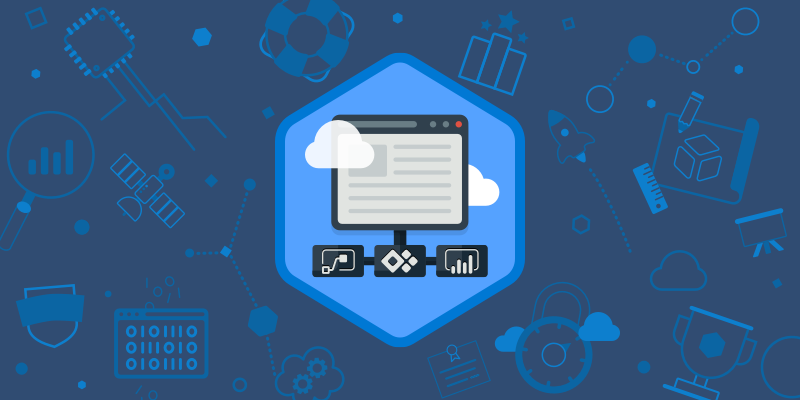Microsoft Power Platform Developer Associate Exam: PL-400

Microsoft Certifications
What’s New In The New Power Platform Developer Certification
In September 2020, Microsoft announced that the Microsoft Certified: Power Apps + Dynamics 365 Developer Associate certification and the exam: MB-400 will be retired on 31st December 2020. The certification is replaced by the new Microsoft Certified : Microsoft Power Platform Developer Associate certification and the new exam PL-400.
Microsoft Certified: Microsoft Power Platform Developer Associate
If you have a passion for designing, developing, securing, and extending Microsoft Power Platform solutions, this certification could be for you. To earn this certification, you must be able to create solution components, including application enhancements, custom user experience, system integrations, data conversions, custom process automation, and custom visualizations. You need a strong applied knowledge of Microsoft Power Platform services and a basic understanding of DevOps practices for Microsoft Power Platform. Plus, your background should include development experience using JavaScript, JSON, TypeScript, C#, HTML, .NET, Azure, Microsoft 365, RESTful web services, ASP.NET, and Power BI.
Skills Measured in the Exam PL-400:
Create a technical design (10-15%)
Validate requirements and design technical architecture
- design and validate the technical architecture for a solution
- design authentication and authorization strategy
- determine whether you can meet requirements with out-of-the-box functionality
- determine when to use Logic Apps versus Power Automate flows
- determine when to use serverless computing, plug-ins, or Power Automate
- determine when to build a virtual entity data source provider and when to use
- connectors
Design solution components
- design a data model
- design Power Apps reusable components
- design custom connectors
- design server-side components
Describe Power Platform extensibility points
- describe Power Virtual Agents extensibility points including Bot Framework skills and
- Power Automate flows
- describe Power BI extensibility points including Power BI APIs, custom visuals, and
- embedding Power BI apps in websites and other applications
- describe Power Apps portal extensibility points including CRUD APIs and custom styling
Configure Common Data Service (15-20%)
Configure security to support development
- troubleshoot operational security issues
- create or update security roles and field-level security profiles
- configure business units and teams
Implement entities and fields
- configure entity and entity options
- configure fields
- configure relationships and types of behaviors
Implement application lifecycle management (ALM)
- create solutions and manage solution components
- import and export solutions
- manage solution dependencies
- create a package for deployment
- automate deployments
- implement source control for projects including solutions and code assets
Create and configure Power Apps (15-20%)
Create model-driven apps
- configure a model-driven app
- configure forms
- configure views
- configure visualizations
Create canvas apps
- create and configure a canvas app
- implement complex formulas to manage control events and properties
- analyze app usage by using App Insights
- build reusable component libraries
Manage and troubleshoot apps
- troubleshoot app issues by using Monitor and other browser-based debugging tools
- interpret results from App Checker and Solution Checker
- identify and resolve connector and API errors
- optimize app performance including pre-loading data and query delegation
Configure business process automation (5-10%)
Configure Power Automate
- create and configure a flow
- configure steps to use Common Data Service connector actions and triggers
- implement complex expressions in flow steps
- implement error handling
- troubleshoot flows by analyzing JSON responses from connectors
Implement processes
- create and configure business process flows
- create and configure business rules
- create, manage, and interact with business process flows by using server-side and clientside code
- troubleshoot processes
Extend the user experience (10-15%)
Apply business logic using client scripting
- create JavaScript or Typescript code that targets the XRM API
- register an event handler
- create client-side scripts that target the Common Data Service Web API
Create a Power Apps Component Framework (PCF) component
- describe the PCF component lifecycle
- initialize a new PCF component
- configure a PCF component manifest
- implement the component interfaces
- package, deploy, and consume the component
- configure and use PCF Device, Utility, and WebAPI features
- test and debug PCF components by using the local test harness
Create a command button function
- create the command function
- design command button rules and actions
- edit the command bar by using the Ribbon Workbench
- manage dependencies between JavaScript libraries
Extend the platform (15-20%)
Create a plug-in
- describe the plug-in execution pipeline
- design and develop a plug-in
- debug and troubleshoot a plug-in
- implement business logic by using pre and post images
- perform operations on data by using the Organization service API
- optimize plug-in performance
- register custom assemblies by using the Plug-in Registration Tool
- develop a plug-in that targets a custom action message
Create custom connectors
- create a definition for the API
- configure API security
- use policy templates to modify connector behavior at runtime
- expose Azure Functions as custom connectors
- create custom connectors for public APIs by using Postman
Use platform APIs
- interact with data and processes by using the Common Data Service Web API or the
- Organization Service
- implement API limit retry policies
- optimize for performance, concurrency, transactions, and batching
- query the Discovery service to discover the URL and other information for an
- organization
- perform entity metadata operations with the Web API
- perform authentication by using OAuth
- Process workloads
- process long-running operations by using Azure Functions
- configure scheduled and event-driven function triggers in Azure Functions
- authenticate to the Power Platform by using managed identities
Develop Integrations (5-10%)
Publish and consume events
- publish an event by using the API
- publish an event by using the Plug-in Registration Tool
- register service endpoints including webhooks, Azure Service Bus, and Azure Event Hub
- implement a Common Data Service listener for an Azure solution
- create an Azure Function that interacts with Power Platform
Implement data synchronization
- configure entity change tracking
- read entity change records by using platform APIs
- create and use alternate key
Exam PL-400 – Preparing For The Exam
Exact2pass provides you the best training material for the Exam: PL-400. With a money-back guarantee on all Exact2Pass training material, it is a sure way to succeed in the PL-400 exam Questions. Exact2Pass provides you PDF dumps and Testing Engine with carefully selected Practice Questions And Answers. With this well researched and to the point affordable training, you can get sure success in the exam PL-400
Conclusion
With the introduction of the new Microsoft Certified: Microsoft Power Platform Developer Associate certification you have a better chance to learn new technologies and a promising career. It has become more easier to earn the new certification with a single exam PL-400. Microsoft Certified: Microsoft Power Platform Developer Associate is a great certification for developers to start a rewarding career in low-code development.






